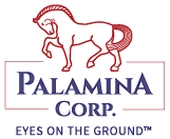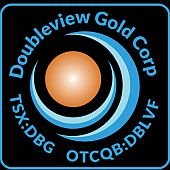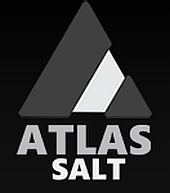 Constantine Metal drills 41.3 m of 5.8% Zn at Palmer
Constantine Metal drills 41.3 m of 5.8% Zn at Palmer
2017-11-02 10:13 ET – News Release
Mr. Garfield MacVeigh reports
CONSTANTINE STEP-OUT DRILLING EXPANDS AG ZONE VMS DISCOVERY, PALMER PROJECT, ALASKA
Constantine Metal Resources Ltd. has released assay results for stepout drilling at the new AG zone discovery at the Palmer project, Alaska. Wide intervals of mineralization have been intersected in multiple holes, expanding the mineralized zone in almost all directions and firmly establishing AG Zone as a significant new VMS discovery.
AG Zone Drill Intersections
Palmer Project AG Zone Long Section
Palmer Project AG Zone Long Section
Figure 3 Cross Section
Photos accompanying this announcement are available on-line.
Key features include a drill defined strike length of 225 meters, a vertical dip length of 275 meters, and all sides open to expansion. Significant mineralization has been intersected in 11 of 13 drillholes with most holes reporting multiple intersections. Mineralization consists of stacked stratabound zones, including a high grade silver-gold upper zone, and a zinc-rich lower zone. The additional drilling has also shown that most of the AG Zone occurs on the steep, relatively planar limb, of a large scale fold structure (See Figures 1, 2 and 3). The sheet-like aspect of mineralization along this limb permits predictive targeting toward other neighboring prospect areas and at depth below present drilling.
Assay Highlights for New and Extended Drill Intersections
Zinc Zone 30.5 meters grading 7.3% zinc, 0.2% lead, 0.1% copper, 6 g/t silver, 0.1 g/t gold 7.8 meters grading 6.7% zinc, 0.8% lead, 0.1% copper, 35 g/t silver, 0.3 g/t gold 6.4 meters grading 4.8% zinc, 1.5% lead, 0.1% copper, 46 g/t silver, 0.3 g/t gold 41.3 meters grading 5.8% zinc, 0.2% lead, 0.1% copper, 9 g/t silver, 0.1 g/t gold 4.4 meters grading 7.4% zinc, 2.6% lead, 0.3% copper, 49 g/t silver, 0.2 g/t gold 9.9 meters grading 4.8% zinc, 0.1% lead, 0.2% copper, 25 g/t silver, 0.2 g/t gold
Silver Zone 3.0 meters grading 128 g/t silver, 1.7 g/t gold 2.3 meters grading 98 g/t silver, 3.2 g/t gold 3.8 meters grading 256 g/t silver, 1.1 g/t gold 0.5 meters grading 549 g/t silver, 1.1 g/t gold 120.1 meters grading 31 g/t silver, 0.1 g/t gold
Garfield MacVeigh, President and CEO, states “Follow-up drilling to our initial AG zone discovery has been a great success. Drilling to date has demonstrated grade, scope, continuity, and, with all edges open to expansion, obvious potential for scale. The 2017 program provides proof of concept of Palmer’s potential to host multiple deposits, and we look forward to building on this theme as we continue to advance the Palmer Project with a focus on new discoveries, expansion of the AG Zone, and expansion and upgrade of the South Wall-RW Zone Mineral Resource.”
AG Zone (Nunatak) Discussion
AG Zone is a new VMS discovery, located 3 km from the known 8.1 million tonne South Wall-RW Zone inferred resource*. To date, drilling has defined the AG Zone over a strike length of 225 meters and a vertical dip length of 275 meters, with all edges open to expansion. Mineralization is stratigraphically correlative with high-grade surface prospects located hundreds of meters along trend to the northwest (Waterfall and CAP) and southeast (JAG). The potential for outlining mineral resources between these areas is excellent.
An updated understanding of AG Zone geology has emerged from new drilling and mapping. Tight folding near to surface gives way to a steeply-dipping, vertically extensive mineral horizon at depth. This is significant as it opens a very large area for expansion of the zone at depth and along strike. These areas are readily accessible to drilling with moderate length holes. Mineralization at AG Zone is well zoned, consisting of a lower zinc-dominant footwall zone, and an upper silver-gold barite rich zone at higher stratigraphic levels. As is typical elsewhere on the Palmer Property, mineralization occurs across a thick interval of stratigraphy and is present at more than one horizon. Mineralization styles includes massive and semi-massive sulphide and barite, and feeder style stringers and replacement.
In addition to the newly reported drill holes, several previously reported intervals of mineralization were significantly expanded following receipt of final assays. Separate new intervals of mineralization are also reported for these holes.
All assay data for the AG Zone drilling has now been received. Remaining data from the 2017 program that has yet to be released includes drill results for three additional holes completed at South Wall, and results of a property wide airborne electromagnetic survey.
About the Palmer project
Palmer is an advanced stage, high-grade volcanogenic massive sulphide (VMS) project, with an Inferred Mineral Resource of 8.1 million tonnes grading 1.41% copper, 5.25% zinc, 0.32 g/t gold and 31.7 g/t silver*. The Project is being advanced as a joint venture between Constantine (51%) and Dowa Metals and Mining Alaska Ltd. (49%), with Constantine as operator. Dowa Metals & Mining Alaska Ltd. is a subsidiary of Dowa Metals and Mining Co., Ltd., an integrated metals company that operates the largest zinc smelter in Japan. The project is located in a very accessible part of coastal Southeast Alaska, with road access to the edge of the property and within 60 kilometers of the year-round deep sea port of Haines. Mineralization at Palmer occurs within the same belt of rocks that is host to the Greens Creek mine, one of the world’s richest VMS deposits. VMS deposits are known to occur in clusters and with at least 25 separate base metal and/or barite occurrences and prospects on the property, there is abundant potential for discovery of multiple deposits at Palmer.
About Constantine Metal Resources Ltd.
Constantine is a mineral exploration company led by a proven technical team with a focus on premier North American mining environments. In addition to the company’s flagship copper-zinc-silver-gold Palmer joint venture project, Constantine also controls a portfolio of high-quality, 100-per-cent owned, gold projects in the Timmins camp of Ontario. This includes the large, well-located Golden Mile property in Timmins and the Munro Croesus gold property that is renowned for its exceptionally high-grade past production. Management is committed to providing shareholder value through discovery, meaningful community engagement, environmental stewardship, and responsible mineral exploration and development activities that support local jobs and businesses.
* 8.125 million tonne inferred resource grading 1.41% copper, 5.25% zinc, 0.32 g/t gold and 31.7 g/t silver. See the Company’s news release date May 11, 2015 and available on www.sedar.com. Resource estimate utilizes an NSR cut-off of US$75/t with assumed metal prices of US$1200/oz for gold, US$18/oz for silver, US$2.75/lb for copper, and US$1.00/lb for zinc. Estimated metal recoveries are 89.6% for copper, 84.9% for zinc, 75% for gold (61.5% to the Cu concentrate and 13.5% to the Zn concentrate) and 89.7% for silver (73.7% to the Cu concentrate and 16% to the Zn concentrate) as determined from metallurgical locked cycle flotation tests. An “Inferred Mineral Resource is that part of a Mineral Resource for which quantity and grade or quality can be estimated on the basis of geological evidence and limited sampling and reasonably assumed, but not verified, geological and grade continuity. Confidence in the estimate is insufficient to allow the meaningful application of technical and economic parameters or to enable an evaluation of economic viability worthy of public disclosure.
Notes:
Samples of drill core were cut by a diamond blade rock saw, with half of the cut core placed in individual sealed polyurethane bags and half placed back in the original core box for permanent storage. Sample lengths typically vary from a minimum 0.3 meter interval to a maximum 2.0 meter interval, with an average 1.0 to 1.5 meter sample length. Drill core samples were shipped by transport truck in sealed woven plastic bags to ALS Minerals laboratory facility in North Vancouver for analysis. ALS Minerals operate according to the guidelines set out in ISO/IEC Guide 25. Gold was determined by fire-assay fusion of a 30 g sub-sample with atomic absorption spectroscopy (AAS). Various metals including silver, gold, copper, lead and zinc were analyzed by inductively-coupled plasma (ICP) atomic emission spectroscopy, following multi-acid digestion. The elements silver, copper, and zinc were determined by ore grade assay for samples that returned values >10,000 ppm by ICP analysis. Density measurements were determined at the project site by qualified Constantine personnel on cut core for each assay sample.
The 2017 exploration program for the Palmer project is managed by Darwin Green, P.Geo, the Company’s Vice President Exploration for Constantine Metal Resources Ltd. and a qualified person as defined by Canadian National Instrument 43-101. Mr. Green has either prepared or supervised the preparation of the scientific and technical disclosure contained in this news release and has reviewed and approved it for disclosure. He has also verified the analytical data for drill core samples disclosed in this release by reviewing the blanks, duplicates and certified reference material standards and confirming that they fall within limits as determined by acceptable industry practice. The analytical results have also been compared to visual estimates for the base metals to check for any obvious discrepancies between analytical results and the visual estimates.
We seek Safe Harbor.
http://constantinemetals.com/news/2017/
































